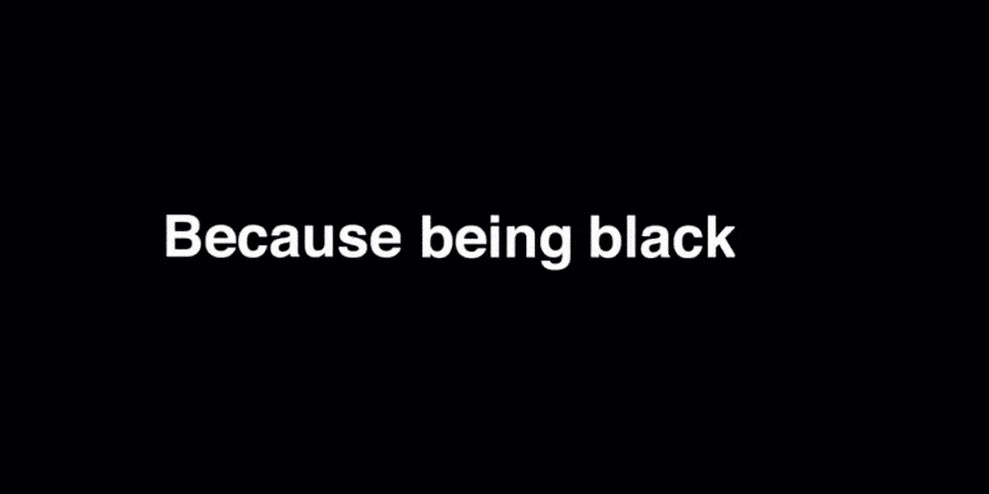“Not a Gun” just needs the right brands to step up.
One time when Anthony O’Neill was growing up, a friend of his called to ask if he could come over. By the time his friend arrived and O’Neill went outside to meet him, the police had pulled his friend over and had him out of the car. Before O’Neill knew it, guns were aimed at both of them.
“My buddy had his keys in his pocket, and they were poking into him, and he kept saying, ‘My keys, my keys!’ And I’m numb, just saying to him, ‘Please man, don’t move,’ because that is the only reason they need,” says O’Neill.
Fast-forward to early 2018. Not long after O’Neill started working as an associate creative director at San Francisco-based ad agency Goodby Silverstein & Partners, alongside Rony Castor, an unarmed Stephon Clark was killed after being shot eight times by Sacramento Police for holding a cell phone.
“We were roommates in corporate housing for two months,” says Castor, who’s also an associate creative director. “And after coming home from a night out, Anthony emptied his pockets on the table and said, ‘It’s pretty crazy that any one of these things could kill me as a Black man.’”
That’s where the idea for the “Not a Gun” PSA started.
Launched in February, the campaign is a partnership between Goodby and the Courageous Conversation Global Foundation. It features a site where those in law enforcement can sign up for a training seminar designed to improve relationships between police departments and communities, as well as sign a petition calling for more unconscious-bias and de-escalation training for police.
Did I mention this was in February?
Obviously one campaign would never be enough to stop the systemic racism and brutal practices of many police departments, but the protests of this past couple of weeks are not only for George Floyd—they’re against a system that treats all Black people as armed and dangerous.
What the “Not a Gun” campaign effectively illustrates is the sheer scale and scope of difference between the everyday lived life of a Black American and a white American. Too often that difference is manifest when innocuous objects become a matter of life and death.
A cellphone (Clark). Cigarettes (Eric Garner). A wallet (Amadou Diallo). Skittles (Trayvon Martin). A $20 bill (George Floyd).
“Growing up Black, both our parents have given us ‘The Talk’ on how to walk into a store—you know not to go directly to the back, you always make eye contact and don’t have your hands in your pockets—so the candy bar here represents the reason to kill or justify these murders,” says O’Neill.
In the end, the man in the ad doesn’t get shot. But it still represents the justified fear where none should exist.
“This isn’t one of those tragic scenarios, but it’s also really bad, because this is the kind of incident that happens over and over again that no one will talk about,” says Castor. “It doesn’t make the evening news, but that’s the Black experience in America. It’s a good day when you get stopped by the cops and walk away with your life. No, that’s still a bad day.”
Last month, Castor and O’Neill extended the campaign to seemingly harmless activities, in the wake of Ahmaud Arbery’s killing while the 25-year-old was out jogging.
The moment we find ourselves in right now provides another opportunity to extend and expand this campaign.
As brands of all sizes and stripes are looking for ways to show they take this issue seriously, maybe a few should think about declaring that their own products aren’t weapons.
Right now, “Not a Gun” features a fictional candy bar brand. But it could easily be a bold statement from Kit Kat or Snickers. Clark was killed for holding a cellphone. Now imagine an iPhone or Samsung ad with the tagline “Not a Gun.”
Advertising is not a solution to this complex issue. But brands are always talking about trying to be a part of the culture, and right now, this is culture. A company’s quest for relevance starts here. Late last year, Castor and O’Neill put out requests for brands to be involved with “Not a Gun” but didn’t get any takers, perhaps because no brands wanted to have their logo associated with bad news.
“But I feel like brands are becoming more bold and are not cool with being quiet right now. So maybe this is a time they might reconsider,” says O’Neill. “This is a watershed moment. It feels like there is an opportunity here for all advertising agencies (and brands) to do a better job. Everyone’s focused on it, everyone’s thinking about it—now it’s just about taking action. If you don’t take action now, you never will.”
–
This article first appeared in www.fastcompany.com
Seeking to build and grow your brand using the force of consumer insight, strategic foresight, creative disruption and technology prowess? Talk to us at +971 50 6254340 or mail: engage@groupisd.com or visit www.groupisd.com/story



